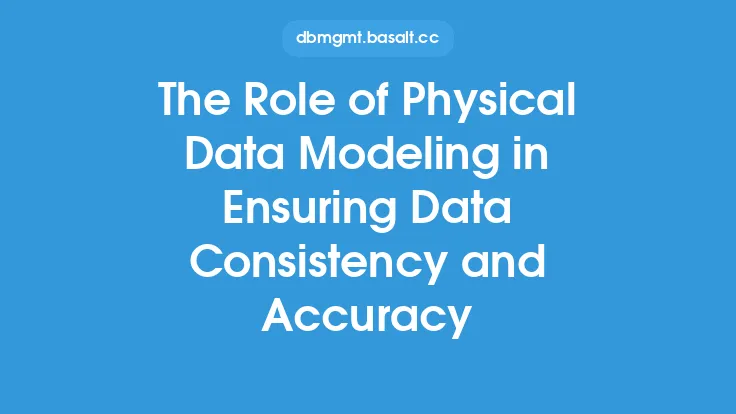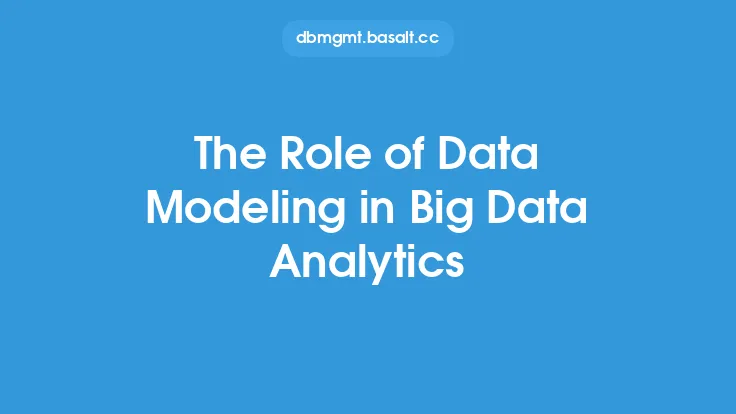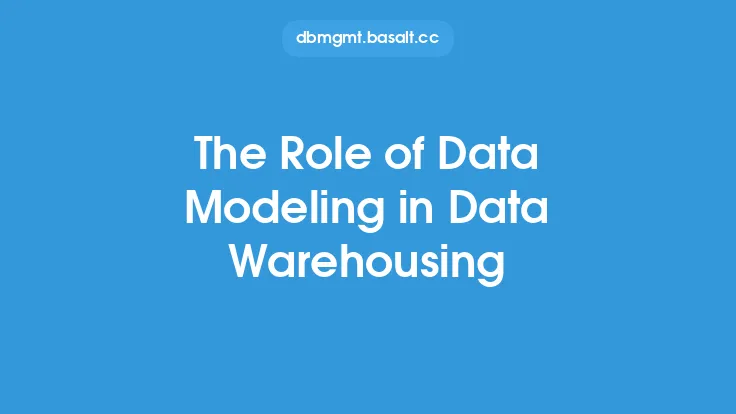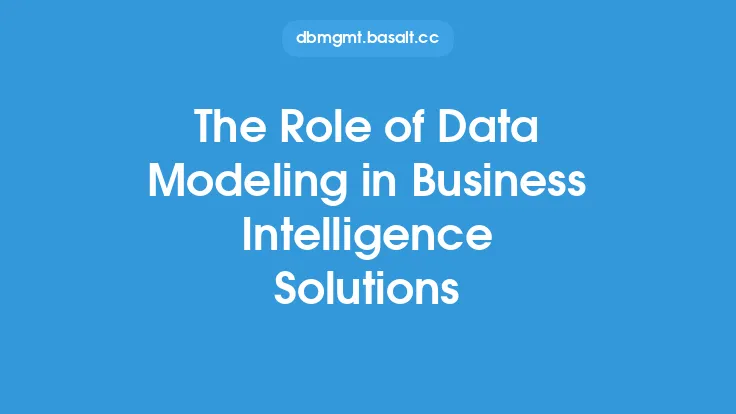Conceptual data modeling plays a vital role in the development of a robust data architecture. It is the first step in the data modeling process, and its primary goal is to identify the key concepts and relationships that exist within an organization's data. This high-level representation of the data provides a foundation for the development of a comprehensive data architecture that meets the needs of the organization.
Introduction to Conceptual Data Modeling in Data Architecture
Conceptual data modeling is a critical component of data architecture, as it provides a framework for understanding the complex relationships between different data entities. It involves the creation of a conceptual data model, which is a visual representation of the data concepts and relationships that exist within an organization. This model is typically developed using entity-relationship diagrams (ERDs) or object-role modeling (ORM) techniques. The conceptual data model serves as a blueprint for the development of a physical data model, which is used to implement the database design.
The Benefits of Conceptual Data Modeling in Data Architecture
The benefits of conceptual data modeling in data architecture are numerous. Firstly, it provides a clear understanding of the data concepts and relationships that exist within an organization, which is essential for the development of a robust data architecture. Secondly, it enables organizations to identify data redundancy and inconsistencies, which can lead to data quality issues. Thirdly, it provides a framework for data integration, which is critical in today's data-driven world. Finally, it enables organizations to make informed decisions about data governance and data management, which is essential for ensuring the integrity and security of the data.
The Process of Conceptual Data Modeling in Data Architecture
The process of conceptual data modeling in data architecture involves several steps. The first step is to identify the key data concepts and relationships that exist within an organization. This involves conducting interviews with stakeholders, reviewing existing documentation, and analyzing the organization's data systems. The next step is to create a conceptual data model, which involves using ERDs or ORM techniques to represent the data concepts and relationships. The conceptual data model is then refined and validated through a series of iterations, which involves reviewing the model with stakeholders and making any necessary changes.
The Tools and Techniques of Conceptual Data Modeling in Data Architecture
There are several tools and techniques that can be used for conceptual data modeling in data architecture. ERDs are a popular choice, as they provide a visual representation of the data concepts and relationships. ORM is another technique that can be used, as it provides a more detailed representation of the data concepts and relationships. There are also several software tools that can be used, such as entity-relationship modeling tools, data modeling tools, and business intelligence tools. These tools provide a range of features and functionalities that can be used to support the conceptual data modeling process.
The Challenges of Conceptual Data Modeling in Data Architecture
Despite the benefits of conceptual data modeling in data architecture, there are several challenges that organizations may face. One of the main challenges is the complexity of the data concepts and relationships that exist within an organization. This can make it difficult to create a comprehensive conceptual data model that accurately represents the data. Another challenge is the lack of standardization, which can make it difficult to integrate data from different sources. Finally, there may be cultural and organizational barriers that can make it difficult to implement a conceptual data modeling approach.
The Future of Conceptual Data Modeling in Data Architecture
The future of conceptual data modeling in data architecture is exciting, as there are several trends and technologies that are emerging. One of the main trends is the use of artificial intelligence and machine learning to support the conceptual data modeling process. This can involve using algorithms to analyze the data and identify patterns and relationships. Another trend is the use of cloud-based data modeling tools, which provide a range of features and functionalities that can be used to support the conceptual data modeling process. Finally, there is a growing recognition of the importance of data governance and data management, which is driving the adoption of conceptual data modeling approaches.
Best Practices for Conceptual Data Modeling in Data Architecture
There are several best practices that organizations can follow to ensure the success of their conceptual data modeling efforts. Firstly, it is essential to involve stakeholders in the conceptual data modeling process, as they can provide valuable insights and feedback. Secondly, it is essential to use a standardized approach to conceptual data modeling, which can help to ensure consistency and accuracy. Thirdly, it is essential to use a range of tools and techniques, which can help to support the conceptual data modeling process. Finally, it is essential to continuously review and refine the conceptual data model, which can help to ensure that it remains relevant and effective.
Conclusion
In conclusion, conceptual data modeling plays a vital role in the development of a robust data architecture. It provides a framework for understanding the complex relationships between different data entities, and it enables organizations to identify data redundancy and inconsistencies. The benefits of conceptual data modeling are numerous, and it is an essential component of any data architecture. By following best practices and using a range of tools and techniques, organizations can ensure the success of their conceptual data modeling efforts and develop a comprehensive data architecture that meets their needs.





